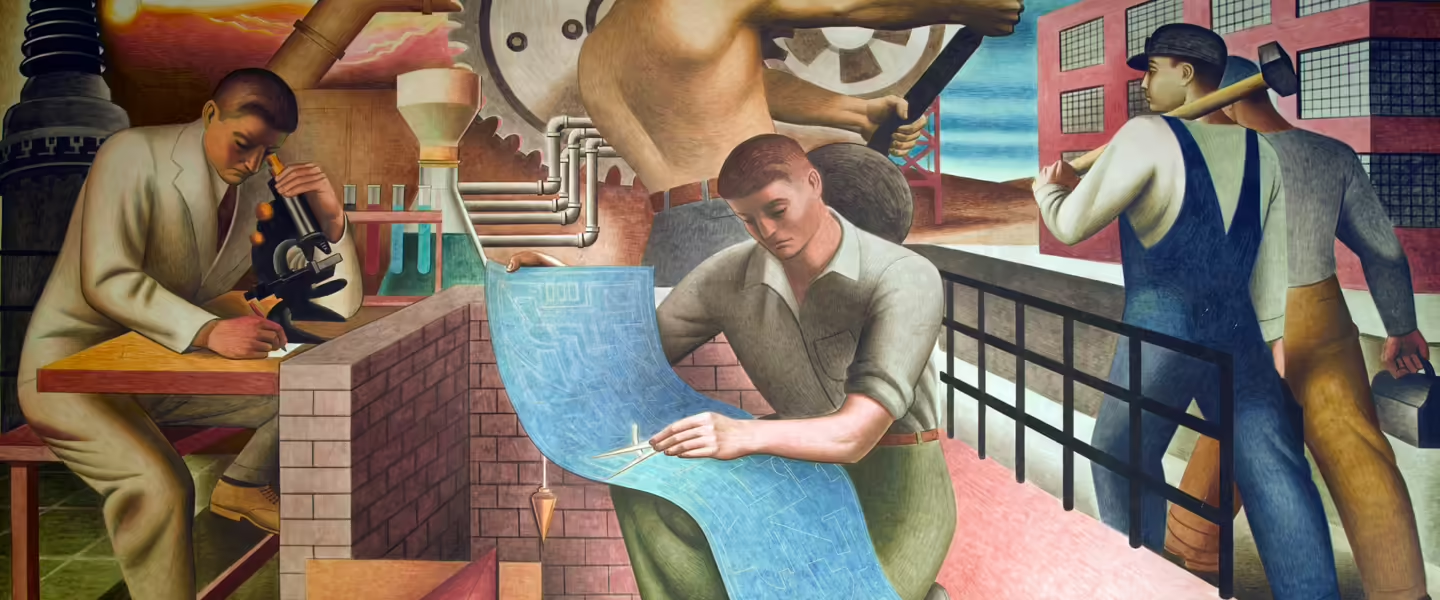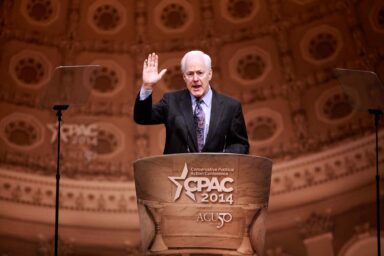The GOP’s party trick: being anti-labor but supposedly pro-working class.
|
Listen To This Story
|
It’s easy to forget that Labor Day is about more than getting off of work. It celebrates the many achievements of unions and workers’ rights advocates that established five-day work weeks and eight-hour work days, among other benefits.
However, in today’s political environment, both Democrats and Republicans constantly claim to be the sole party fighting for the working class. With a major election less than 80 days away, it’s important to analyze the track record of each party to determine who has actually done more to bring about tangible benefits for laborers.
Democrats have long been perceived as the party for the working class, though this is beginning to change, with an increasing number of working-class Americans identifying with the Republican Party.
This shift has been taking place despite the consistent advocacy for workers by the Democratic Party. For example, President Barack Obama’s administration updated overtime regulations under the Fair Labor Standards Act and strengthened laws prohibiting discrimination against pregnant workers.
In March 2021, Democrats passed the Protecting the Right to Organize Act in the House of Representatives, which would expand who is protected by fair labor standards, make it illegal to discriminate against workers who participate in strikes, and provide protections for whistleblowers, among other provisions. However, it has not passed the Senate. Proponents of the bill have been unable to secure the supermajority of votes necessary to defeat a filibuster. The bill was reintroduced by Senator Bernie Sanders in February 2023, but once again failed to progress much further.
The Raise the Wage Act, which would raise the minimum wage incrementally to $15, has been introduced by Democrats in each Congress since 2017 — though it has been blocked each time by Republicans.
Meanwhile, President Joe Biden has arguably established himself as the most pro-labor president in modern history. In September of last year, for example, Biden traveled to Michigan to support the United Auto Workers strike and became the first president to walk with workers on a picket line.
Additionally, with Vice President Kamala Harris now the Democratic presidential nominee, both the UAW and the AFL-CIO have made statements enthusiastically endorsing her candidacy.
The AFL-CIO statement emphasizes its appreciation for recently announced vice presidential nominee Tim Walz’s pro-labor record as Minnesota governor, which includes guaranteeing family and medical leave, mandating paid sick days, and strengthening the bargaining power of teachers’ unions, among other accomplishments.
As for Harris, she led a White House task force that made recommendations for how agencies could reduce barriers for public and private sector workers to unionize and, within a year of implementation, was able to increase the number of federal employees who are dues paying members by 20 percent.
She has also influenced the Biden administration’s development of regulations that prevent agencies from relying on a job applicant’s salary history to set their pay — noting that this practice contributes to the gender pay gap.
Across the aisle, Republicans do not share either such pro-union sentiment or achievements. The Communications Workers of America describes former President Donald Trump’s record as “anti-worker.”
Along with a number of other grievances, they cite that Trump has “made it easier for employers to fire or penalize workers who speak up for better pay and working conditions or exercise the right to strike; … changed the rules about who qualifies for overtime pay, making more than 8 million workers ineligible; … and broken his campaign promise to take on companies that move good jobs overseas” — making this US job-killing practice more profitable.
Additionally, according to the Center on Budget and Policy Priorities, Trump’s passage of the Tax Cuts and Jobs Act in 2017 was immensely beneficial — for the top 1 percent of income earners, who will receive an average tax cut of $60,000 in 2025, while the average household will receive an average tax cut of about $500.
One of the most significant parts of the law was a large, corporate tax cut, from 35 to 21 percent. Trump had claimed this would result in a sizable increase in income for the average worker, and yet no such increase occurred, instead sharply boosting executive salaries and shareholder-enriching stock buybacks.
A more recent example of the Republican Party’s general disregard for workers comes in the form of a bill passed by the Legislature of deep-red Texas and signed into law by Gov. Greg Abbott in June 2023, which eliminated mandatory water breaks for outdoor workers in the midst of intense heat waves. While many workers receive these breaks regardless, nullifying this minimal protection of workers’ rights and well-being legalized this abuse and could be fatal for some.
Following understandable outrage, officials in Houston filed a lawsuit against the state of Texas in response to this law, claiming that Abbott had overstepped his powers. Travis County Judge Maya Guerra Gamble (D) sided with Houston and declared the law unconstitutional, though the state has appealed to the Texas Supreme Court.
While these examples are by no means comprehensive, they do clearly demonstrate a larger theme: On issues affecting the rights and livelihoods of the working class, the Democratic Party has consistently pushed for positive change, while the Republican Party has consistently prioritized the interests of big business, which are often detrimental to workers.
So, even though larger conversations should be had about the extent to which money influences politics within both parties, it is evident that the Democratic Party has provided the most tangible benefits for the working class, and is therefore the closest thing we have to a party “for the people.”
AUTHOR:
Haley Marshlick is a third-year honors student at Franklin & Marshall College. She has also worked as a researcher for the Department of Anthropology.




